A few years back, when current Cornell grad student Jesse Walker was trying to figure out which PhD program to attend, he visited the schools to which he’d been admitted—a process that included meeting with a prominent professor at a certain Ivy outside Boston. When the distinguished academic asked what other institutions he was considering, Walker replied that Cornell’s social psychology program was high on his list. And then, Walker recalls, “He sort of sank back in his chair and said, ‘There’s no doubt in my mind that we’ve lost you.’ ” Walker asked him why. “He said, ‘Because Tom Gilovich is the best graduate social psychology adviser in the world.’ ”
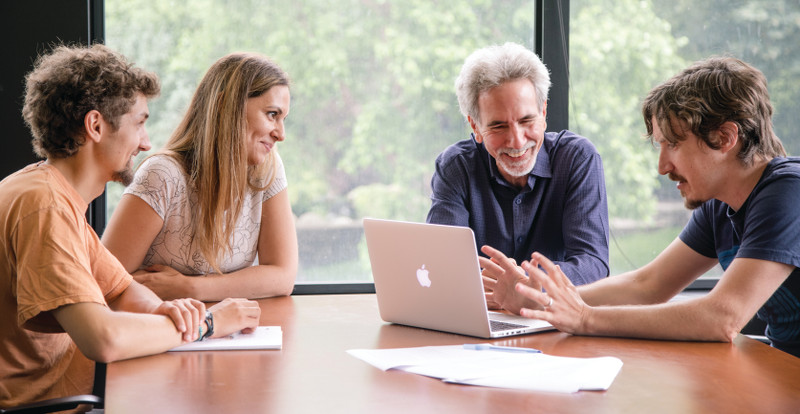
Gilovich with (from left) undergrad researcher Chris Welker ’18 and current grad students Carmen Sanchez and Jesse Walker.
Photo: Allison Usavage
It would prove to be a recurring theme. “I’d go from place to place,” Walker says, “and when I’d tell them I was thinking of going to Cornell, they’d say, ‘Oh, well—Tom is the best. Tom is the best.’ ”
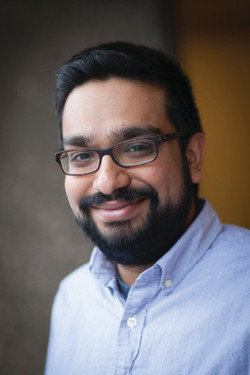
Amit Kumar, PhD ’15
Photo provided
Amit Kumar, PhD ’15, had a related experience, though it came when he was already studying under Gilovich, the Irene Blecker Rosenfeld Professor of Psychology at Cornell. Like many early career researchers, he went through a rough patch of insecurity and self-doubt. “I felt like I wasn’t being creative or original enough,” he explains, “like I was becoming too much like Tom instead of becoming my own person.” For advice, he turned to a respected psychology professor—also, as it happens, at Harvard. “What he told me is engrained in my mind,” says Kumar, now a postdoc at the University of Chicago’s Booth School of Business. “He said, ‘A student of Pavarotti whose main complaint is that he can only sing like Pavarotti is a lucky student indeed.’” As Kumar continues: “That sums up how respected Tom is, and how all his students strive to be as much like him as possible. You often want to distinguish yourself from other people—but anybody who has had the opportunity to work with Tom hopes that one day they can come anywhere close to him.”
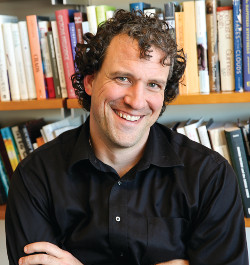
Nick Epley, PhD ’01
Photo provided
It’s heady praise—but when it comes to Gilovich, hardly rare. Asked to describe how his former adviser has influenced his career, Nick Epley, PhD ’01, says, “That’s like asking a seed to explain what it gets from the soil around it.” Epley, who holds a named professorship at the Booth School, was among the Cornell alumni mentioned by name when the Society for Personality and Social Psychology gave Gilovich its 2016 award for excellence in mentoring. As the citation noted, “The list of people for whom Dr. Gilovich served as graduate adviser and mentor reads like a Who’s Who of both established and up-and-coming scholars in social psychology.” Says another on that list of notables, Leaf Van Boven, PhD ’00, now a professor at the University of Colorado, Boulder: “Tom is one of the most deeply concerned, caring, genuine mentors I’ve met.” From yet another, Victoria Medvec, PhD ’95, who holds a named professorship at Northwestern’s Kellogg School of Management: “He raises his students to be incredible researchers, but he also supports them in being effective teachers, and that’s key to their success. I got early tenure after three years, and I’m 100 percent confident I would not have gotten that if I hadn’t worked with Tom Gilovich.”
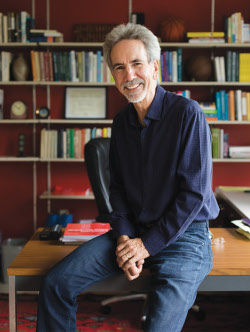
Tom Gilovich
Photo: Allison Usavage
Gilovich joined the Cornell faculty after earning his PhD from Stanford in 1981—and during his three and a half decades on the Hill, he has become known not only as a premier trainer of young social scientists, but as one of academia’s most renowned researchers on the psychology of everyday life. As Epley puts it: “To find ideas, Tom tends to look out the window, not in a journal.” Regularly cited in both scholarly papers and the popular press, Gilovich has conducted studies on a dizzying variety of topics, from sports to business to social life. “One very attractive part of this field is that all of human experience is the playground,” says Gilovich, who has published general interest books on his research including How We Know What Isn’t So: The Fallibility of Human Reason in Everyday Life and The Wisest One in the Room: How You Can Benefit from Social Psychology’s Most Powerful Insights. “To me, the fact that it’s so diverse is a great thing.”
But there’s a common theme that runs through Gilovich’s work and that of his many academic progeny: an effort to answer questions about the human psyche that are as quotidian as they are fundamental. How do we perceive the world? What makes us happy? Why do we think what we think? How do we make the right—or, too often, the wrong—choices? “What makes Tom stand out is not just that he cares about doing good research—replicating it and having great theory behind it—but that he cares deeply about it being tied to the real world,” says Shai Davidai, PhD ’15, now an assistant professor at the New School for Social Research. “He’d always ask, ‘Where do we see the impact of this in people’s lives?’ That inspires me in my own research; is this something that happens in the real world, or am I stuck in an ivory tower?”
Popular Science
As many of his former students note, Gilovich is a consummate storyteller who weaves compelling anecdotes into his papers and lectures to make the work memorable. When conceiving a research project, he says, “I always ask, Is there some more interesting way of doing this? There’s so much information out there; is there something that can make it stand out?”
And that’s how a bunch of hapless Cornell students wound up wearing Barry Manilow T-shirts.
It was quintessential Gilovich: in the mid-Nineties, he and some of his grad students were studying a now-classic concept that they dubbed the “spotlight effect”: the idea that individuals tend to vastly overestimate how much attention other people pay to them, for good and ill. Although we imagine that our bad hair days and spinach-flecked teeth doom us to public censure, the concept holds that others don’t actually pay much notice—and the same goes for our moments of brilliance, which often go unheralded.
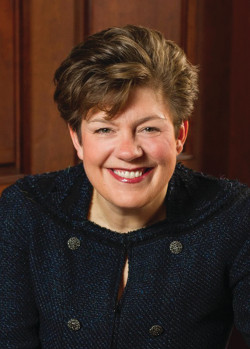
Victoria Medvec, PhD ’95
Photo provided
Casting about for something that would encapsulate the phenomenon, Gilovich and his team hit upon the idea of an experiment in which undergrad volunteers were asked to don a T-shirt bearing the likeness of the Seventies-era “Copacabana” crooner—the most cringe-worthy garment the researchers could conjure at that particular cultural moment—and then briefly interact with other students. Afterward, they asked the subjects to predict how many of the others had noticed the shirt. The average answer was about half; the reality was less than a quarter. The work was published in the Journal of Personality and Social Psychology (JPSP) in 2000, with Medvec and Kenneth Savitsky, PhD ’97 (now a professor at Williams College), as co-authors. As Gilovich observes with a laugh: “That paper has five or six studies in it, and the one everybody always talks about is the Barry Manilow one.”
During his own grad studies, Epley followed up on that spotlight effect research, putting participants in a variety of potentially humiliating situations in front of an audience; he had them sing the “Star Spangled Banner” while chewing bubble gum, dance the bossa nova, or be introduced as an occasional bedwetter. “Those in the throes of an embarrassing moment consistently overestimated how harshly others were evaluating them,” Epley writes in his book Mindwise: Why We Misunderstand What Others Think, Believe, Feel, and Want. “Even once the social spotlight was on them, it did not burn as hot as those in its glare expected it to . . . Others may not give us much thought, but when they do, they generally cut us more slack than we’d imagine, because they’re not ruminating on our mistakes as much as we are ourselves.”
Missed Opportunities
The spotlight work connects up to another topic Gilovich and his students have studied extensively: regret. A paper on the subject that he and Medvec co-authored in Psychological Review in 1995 has nearly 1,000 citations on Google Scholar. Their fundamental finding, based in part on dozens of telephone surveys and in-person interviews, is that people tend to regret inaction more than action—that is to say, they rue the things they didn’t do more than the mistakes they actually made, especially as time passes. “A lot of those regrets seem to be failures to do things that people knew were in their self-interest but they were afraid to do,” says Gilovich. “ ‘I didn’t try out for the team; I didn’t ask this person out on a date; I didn’t go to that school because it seemed like I couldn’t measure up.’ They don’t do it because of a fear of failure—and in particular what it will look like to other people.”
The takeaway—and as in much of Gilovich’s work, there’s a life lesson to be had—is that since others don’t judge us nearly as harshly as we imagine, we can forestall later regret by erring in favor of action (assuming that it’s not some life-derailing mistake, like robbing a bank). “When you find yourself not knowing what to do, and the thing that’s preventing you is what other people are going to think about you, you really should try to get past that,” Gilovich says. “It will be very much in your interest.”
A cousin of regret is a concept known as “counterfactual thinking”—essentially, the psychology of what might have been. It underpins one of Gilovich’s most famous projects: a study, with Medvec and Scott Madey, PhD ’93 (now a professor at Shippensburg University), of Olympic medalists that continues to fascinate and garner headlines. (As Medvec says with a laugh: “If you’re deciding what to do in graduate school, try to pick something related to an event that recurs, like elections or the Olympics, because it keeps the study fresh in everyone’s minds.”) The project asked twenty Cornell undergrads to view NBC’s footage of silver and bronze medalists at the 1992 Games in Barcelona, both immediately after their event and while on the awards stand, then rate their emotions based on their reactions and facial expressions. The result—described in a 1995 paper in JPSP entitled “When Less Is More”—was that even though the second-place finishers had performed objectively better than the third-placers, they were less happy.
Why? Because—as the researchers theorized and then backed up with interviews of athletes during the 1994 Empire State Games—both were indulging in counterfactual thinking. But while the silver medalists thought that if only they’d done a little better they would’ve taken home the gold, the bronze medalists were comparing themselves to the fourth-place finishers—and feeling grateful that they’d won a medal at all. That research has informed Medvec’s career, both as an academic and as an expert consultant on the art of negotiation. “Under Tom, I became a master at understanding what drove satisfaction and regret—I learned to predict what kind of dynamics would cause someone to leave satisfied or dissatisfied,” she says. “What I’ve become known for is understanding how you approach negotiation in ways that leave the other side satisfied while you get what you want—and that is tied to what I teach, which is how to simultaneously build your relationship with the other side while maximizing your own outcome.”
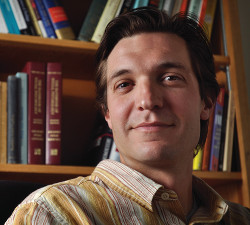
Leaf Van Boven, PhD ’00
Photo: Glenn J. Asakawa/University of Colorado
Gilovich’s work often crosses over into the fields of hedonic studies—a.k.a. the psychology of happiness—and behavioral economics, which uses psychology to study economic decision-making. For more than a decade, he and his students have been drilling down on what seems to be an essential truth: experiences make us happier than possessions do. In 2003, he and Van Boven published an article in JPSP called “To Do or to Have? That Is the Question,” in which they reported results of several studies on the topic and pondered the reasons for the happiness gap—which, they said, boils down to three factors. First, Van Boven explains, “Experiences change our perception of who we are, so they define us as being a particular type of person.” Second: “Experiences tend to foster social relationships, both because we have them with other people and because they make us more socially desirable.” And third: “Experiences get better with time as we look back on them fondly; we remember the fun aspects of the camping trip and forget the hassles.”
Material things, by contrast, don’t offer that ongoing, renewable boost—even though that may seem counterintuitive. After all, a Broadway ticket and a pair of shoes may each cost about $100, but the show is over in an evening and the footwear could last for years. “The seeming economic rationality of getting a material thing can feel very compelling,” Van Boven admits. “What people don’t always realize is that psychologically, they’re not really holding on to the possession in the same way; it sort of disappears. These things become the background, and we don’t engage or attend to them in any meaningful way. But experiences—because they exist only in our minds, in the stories we tell, and in our interactions with other people—we bring out on a less predictable basis, so they continue to live on in a way that material things don’t.”
Blessings & Curses
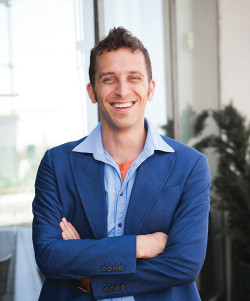
Shai Davidai, PhD ’15
Photo provided
Last spring, Gilovich and Davidai appeared together on “Freakonomics,” a popular podcast that covers topics related to behavioral economics, to talk about another factor that plays an essential role in happiness: gratitude. Specifically, they addressed a concept they’d covered in a 2016 paper in JPSP known as the “headwinds/tailwinds asymmetry.” Translation: we are much more aware of our challenges than we are of our blessings. “It’s easy to be resentful and see all the headwinds you have, the barriers you have to overcome,” Gilovich explains, “and to ignore all the things that are boosting you along.” In one study, the researchers had sets of volunteers answer trivia questions that had widely varying levels of difficulty; afterward, they had them recall what each contestant had been asked. “Your hard categories really stand out to you, and the other person’s easy categories stand out to you,” Gilovich says. “ ‘Why did you get American baseball, whereas I got Australian rules football?’ ” Other studies in the same article found that both Democrats and Republicans think the electoral college system better advantages the opposing party; that football fans note the challenging games on their team’s schedules more than the easier ones; and that people think their parents were harder on them than on their siblings.
The headwinds/tailwinds asymmetry plays out in myriad ways in everyday life, as negative events and outcomes stick in your mind more vividly than positive ones. “I live in New York City, and the example I like to give is that when I get to the subway station thirty seconds before the train arrives, I feel great for about two minutes and then forget about it,” says Davidai. “But when I get to the train thirty seconds after it leaves and I just miss it, I feel horrible—and that horrible feeling sticks with me for more than two minutes. And if you ask me at the end of the month, ‘How many times did you barely make the train and how many times did you barely miss it?’ it feels like I missed it more than I made it.”
Davidai says the research has made him aware of how such tailwinds play out in his own life, smoothing his path in everything from job interviews to TSA screenings. And indeed, many of Gilovich’s students report that their work with him has informed their decision-making on such topics as how to spend their money, what jobs to take, and how to carve out work-life balance.
Epley, for instance, ultimately ditched his smartphone, motivated in part by research he did at Cornell (and published in the Journal of Experimental Social Psychology in 2005 with Justin Kruger, PhD ’99, now a professor at NYU’s Stern School of Business) about the significant limitations that text-based communication has in faithfully conveying meaning. Undergrad psychology major Chris Welker ’18, who’s currently doing a senior thesis under Gilovich, cites his professor’s work on regret when he forces himself to make time for an outdoor hike or some other fun activity on a weekend crammed with schoolwork. “I might think I’d regret it, because I’ll be stressed afterward,” he says, “but I’ll probably regret it more if I don’t take the opportunity.” And Van Boven says that the research he did under Gilovich has often guided his career path—prompting him, for example, to turn down job opportunities that might have offered more money or prestige but would curtail the kind of life experiences that make for lasting happiness. As Davidai observes: “Every five or six years, Tom works on something new—and it changes the way a lot of the people see the world and think about their lives.”
On Your Mind
A sampling of research by Gilovich and his students
Husbands & Wives
 It was a social scientific take on “The Newlywed Game.” To study how well long-term couples actually know each other—in contrast to how well they think they do—Nick Epley, PhD ’01, and colleagues conducted an experiment in which each half of a romantic pair was given a list of twenty statements, such as, “I would rather spend a quiet evening at home than go out to a party” and “Our family is too heavily in debt today.” They were asked to answer on a scale from one to seven, from “strongly disagree” to “strongly agree”—and also to predict how their partner would respond. The couples had been together an average of 10.3 years and 55 percent of them were married, yet they were only able to precisely predict their sweetheart’s answer on an average of 4.9 of the statements—and random guessing would have yielded a 2.85. What’s more, Epley says, the participants were “wildly overconfident” about how many they’d gotten right—predicting an average of 12.6. “People thought they understood their spouse quite well,” says Epley, who described the experiment in his book Mindwise, “and in these cases, they were just wrong.”
It was a social scientific take on “The Newlywed Game.” To study how well long-term couples actually know each other—in contrast to how well they think they do—Nick Epley, PhD ’01, and colleagues conducted an experiment in which each half of a romantic pair was given a list of twenty statements, such as, “I would rather spend a quiet evening at home than go out to a party” and “Our family is too heavily in debt today.” They were asked to answer on a scale from one to seven, from “strongly disagree” to “strongly agree”—and also to predict how their partner would respond. The couples had been together an average of 10.3 years and 55 percent of them were married, yet they were only able to precisely predict their sweetheart’s answer on an average of 4.9 of the statements—and random guessing would have yielded a 2.85. What’s more, Epley says, the participants were “wildly overconfident” about how many they’d gotten right—predicting an average of 12.6. “People thought they understood their spouse quite well,” says Epley, who described the experiment in his book Mindwise, “and in these cases, they were just wrong.”
The ‘Sudden-Death’ Paradox
 Among the many sports-related topics Tom Gilovich and his students have studied—which include his widely reported work debunking the concept of the basketball shooting streak known as the “hot hand”—is a concept he dubbed “sudden-death aversion.” The phenomenon, which Gilovich and several others explore in a paper currently under journal review, is a disinclination by coaches and players to take actions that could lead to an instant loss—even if they have a higher likelihood of yielding an instant win. For example, if a basketball team is down by two points in a game’s final moments, there’s a choice. “They can go for the easier two-point shot, which [assuming they make it] will extend the game into overtime,” says grad student Jesse Walker. “Or they can go for the more difficult three-point shot, which yields a greater chance of losing right away—but ultimately, we found that it has a greater chance of winning the game.” And yet, he says, NBA teams avoid the three-point shot more than 75 percent of the time, meaning they are “really averse to doing what is actually optimal.” Why? “The conventional wisdom is that you should take the two-point shot,” Walker explains. “Coaches may be avoiding the three-point because they’re afraid of being blamed by the fans, press, and owners if they fail with it.” And as the researchers note, sudden-death aversion is hardly limited to sports; there are myriad instances in which, Gilovich says, “you’re so worried about taking your lumps immediately that you try to put off the bad stuff to the distant future, and it just makes matters worse.” Case in point: the Watergate scandal, a prime example of the cover-up being worse than the crime.
Among the many sports-related topics Tom Gilovich and his students have studied—which include his widely reported work debunking the concept of the basketball shooting streak known as the “hot hand”—is a concept he dubbed “sudden-death aversion.” The phenomenon, which Gilovich and several others explore in a paper currently under journal review, is a disinclination by coaches and players to take actions that could lead to an instant loss—even if they have a higher likelihood of yielding an instant win. For example, if a basketball team is down by two points in a game’s final moments, there’s a choice. “They can go for the easier two-point shot, which [assuming they make it] will extend the game into overtime,” says grad student Jesse Walker. “Or they can go for the more difficult three-point shot, which yields a greater chance of losing right away—but ultimately, we found that it has a greater chance of winning the game.” And yet, he says, NBA teams avoid the three-point shot more than 75 percent of the time, meaning they are “really averse to doing what is actually optimal.” Why? “The conventional wisdom is that you should take the two-point shot,” Walker explains. “Coaches may be avoiding the three-point because they’re afraid of being blamed by the fans, press, and owners if they fail with it.” And as the researchers note, sudden-death aversion is hardly limited to sports; there are myriad instances in which, Gilovich says, “you’re so worried about taking your lumps immediately that you try to put off the bad stuff to the distant future, and it just makes matters worse.” Case in point: the Watergate scandal, a prime example of the cover-up being worse than the crime.
Don’t Jinx It!
 Think back to when you were waiting to hear if you got into Cornell. Your mom buys you a Big Red T-shirt. Would you put it on? Or would you fear that wearing it would amount to “tempting fate”—that it would jinx your chances? Jane Risen, PhD ’07, devoted her dissertation to that sort of magical thinking—the idea that, as she puts it, “certain actions would lead to negative outcomes, even if there’s no causal connection.” Now a professor at the University of Chicago, Risen has worked with Gilovich on such topics, including why people are reluctant to swap lottery tickets (for fear that the one they gave away will be more likely to win) and why mentioning a winning streak seems to herald its end. The common theme, as they described it in a 2009 paper in Advances in Consumer Research (with Justin Kruger, PhD ’99, and Kenneth Savitsky, PhD ’97), is “how people apply superstitious decision-making strategies in their everyday life, even while acknowledging that these strategies are not rational.” Among Risen’s current research topics is the psychology behind superstitious rituals for undoing bad luck, like spitting, throwing salt, or knocking on wood. “These are the things you do after you’ve tempted fate,” she says—and, she observes, they have a common denominator of symbolically pushing the negative notion away.
Think back to when you were waiting to hear if you got into Cornell. Your mom buys you a Big Red T-shirt. Would you put it on? Or would you fear that wearing it would amount to “tempting fate”—that it would jinx your chances? Jane Risen, PhD ’07, devoted her dissertation to that sort of magical thinking—the idea that, as she puts it, “certain actions would lead to negative outcomes, even if there’s no causal connection.” Now a professor at the University of Chicago, Risen has worked with Gilovich on such topics, including why people are reluctant to swap lottery tickets (for fear that the one they gave away will be more likely to win) and why mentioning a winning streak seems to herald its end. The common theme, as they described it in a 2009 paper in Advances in Consumer Research (with Justin Kruger, PhD ’99, and Kenneth Savitsky, PhD ’97), is “how people apply superstitious decision-making strategies in their everyday life, even while acknowledging that these strategies are not rational.” Among Risen’s current research topics is the psychology behind superstitious rituals for undoing bad luck, like spitting, throwing salt, or knocking on wood. “These are the things you do after you’ve tempted fate,” she says—and, she observes, they have a common denominator of symbolically pushing the negative notion away.
Are We Having Fun Yet?
 If you think that everyone else has a better social life than you do, don’t fret; Sebastian Deri ’13, MS ILR ’16, says it’s likely not so. The current Gilovich grad student focuses his research on why people have false beliefs about the everyday world. Among the topics he’s been working on is the phenomenon that most people think that others around them have more fun than they do. In one study, subjects were posed questions about who goes to more parties—themselves, or other people they know?—while being asked to ponder their more and less outgoing friends. The takeaway, Deri says, is that when rating your own fun levels, “the person you compare yourself to is someone who is really social, so you think that everyone else is going out more.” Deri’s other work on social life includes a topic covered in his master’s thesis: why it’s more painful to get dumped by a romantic partner in favor of someone else than for no one in particular.
If you think that everyone else has a better social life than you do, don’t fret; Sebastian Deri ’13, MS ILR ’16, says it’s likely not so. The current Gilovich grad student focuses his research on why people have false beliefs about the everyday world. Among the topics he’s been working on is the phenomenon that most people think that others around them have more fun than they do. In one study, subjects were posed questions about who goes to more parties—themselves, or other people they know?—while being asked to ponder their more and less outgoing friends. The takeaway, Deri says, is that when rating your own fun levels, “the person you compare yourself to is someone who is really social, so you think that everyone else is going out more.” Deri’s other work on social life includes a topic covered in his master’s thesis: why it’s more painful to get dumped by a romantic partner in favor of someone else than for no one in particular.
Psychology of Small Talk
 Gilovich’s current interests include the psychology of casual conversation; surprisingly, he says, that sort of cocktail party chitchat is something that many people include on their list of biggest fears (along with things like snakes, spiders, and speaking in public). “People are more frazzled about informal conversation than they should be,” Gilovich says. “They worry, Am I boring the people I’m talking to? Do they really want to be talking to me? How long do I keep going? How do I end this gracefully?” With a research team including psych major Chris Welker ’18—who’s doing a senior thesis on the subject—they’ll be bringing people into the lab to study how feelings about making small talk change under various conditions, like whether there are other people in the room. One strategy that might make such situations less stressful, Gilovich says, is the introduction of “ice makers”—which (in contrast to “ice breakers”) can bring the conversation to a natural end.
Gilovich’s current interests include the psychology of casual conversation; surprisingly, he says, that sort of cocktail party chitchat is something that many people include on their list of biggest fears (along with things like snakes, spiders, and speaking in public). “People are more frazzled about informal conversation than they should be,” Gilovich says. “They worry, Am I boring the people I’m talking to? Do they really want to be talking to me? How long do I keep going? How do I end this gracefully?” With a research team including psych major Chris Welker ’18—who’s doing a senior thesis on the subject—they’ll be bringing people into the lab to study how feelings about making small talk change under various conditions, like whether there are other people in the room. One strategy that might make such situations less stressful, Gilovich says, is the introduction of “ice makers”—which (in contrast to “ice breakers”) can bring the conversation to a natural end.
Make a Connection
 Your mother told you not to talk to strangers—but ignoring her advice might make your day. “Psychologists find very reliably that our happiness is driven by how connected we feel to other people,” says Epley. “And yet we spend a lot of time around perfectly delightful other people, but we don’t connect with them.” To suss out why, he conducted a series of experiments in which Chicago commuters were instructed either to strike up conversations with strangers on public transportation, keep to themselves, or go about their normal business, then fill out surveys about their experiences. “People were happier and had a more pleasant commute when they engaged in conversation,” says Epley, who published the study in the Journal of Experimental Psychology (JEP): General in 2014. “So why don’t people do this?” Epley then had volunteers imagine they’d been assigned to each of the three conditions and predict how they’d feel. “What we found was that people expected to have the most pleasant experience in the solitude condition and the least in the connection condition,” he says. “So their expectations were not just wrong—they were precisely wrong.”
Your mother told you not to talk to strangers—but ignoring her advice might make your day. “Psychologists find very reliably that our happiness is driven by how connected we feel to other people,” says Epley. “And yet we spend a lot of time around perfectly delightful other people, but we don’t connect with them.” To suss out why, he conducted a series of experiments in which Chicago commuters were instructed either to strike up conversations with strangers on public transportation, keep to themselves, or go about their normal business, then fill out surveys about their experiences. “People were happier and had a more pleasant commute when they engaged in conversation,” says Epley, who published the study in the Journal of Experimental Psychology (JEP): General in 2014. “So why don’t people do this?” Epley then had volunteers imagine they’d been assigned to each of the three conditions and predict how they’d feel. “What we found was that people expected to have the most pleasant experience in the solitude condition and the least in the connection condition,” he says. “So their expectations were not just wrong—they were precisely wrong.”
The Gift of Life
 Every year, thousands die on waiting lists for donated organs. But according to Shai Davidai, PhD ’15, the key to increasing donation may simply lie in how the question is presented. “Presumably the main drivers should be your beliefs, religion, and so forth,” says Davidai. “But what really matters is whether you’re asked if you want to be a donor—an opt-in—or if you don’t, an opt-out.” The dichotomy is striking: a donation rate of more than 90 percent in societies where citizens opt out, compared with only around 15 percent where they opt in. In a study in the Proceedings of the National Academy of Sciences in 2012 (with Gilovich and Lee Ross, under whom Gilovich studied at Stanford), Davidai examined differences in attitudes toward donation between countries like Germany (opt-in) and Austria (opt-out). The bottom line, he says, is that each option sends an implied—if unintended—message. “When you ask people about opting in, they see donation as a heroic act, something an immensely benevolent person does,” he says. “But when you ask them about opting out, the same action becomes more mundane—like paying your taxes, which we expect everyone to do.”
Every year, thousands die on waiting lists for donated organs. But according to Shai Davidai, PhD ’15, the key to increasing donation may simply lie in how the question is presented. “Presumably the main drivers should be your beliefs, religion, and so forth,” says Davidai. “But what really matters is whether you’re asked if you want to be a donor—an opt-in—or if you don’t, an opt-out.” The dichotomy is striking: a donation rate of more than 90 percent in societies where citizens opt out, compared with only around 15 percent where they opt in. In a study in the Proceedings of the National Academy of Sciences in 2012 (with Gilovich and Lee Ross, under whom Gilovich studied at Stanford), Davidai examined differences in attitudes toward donation between countries like Germany (opt-in) and Austria (opt-out). The bottom line, he says, is that each option sends an implied—if unintended—message. “When you ask people about opting in, they see donation as a heroic act, something an immensely benevolent person does,” he says. “But when you ask them about opting out, the same action becomes more mundane—like paying your taxes, which we expect everyone to do.”
Better to Give than to Receive?
 As the gift-giving adage goes, it’s the thought that counts; Epley says that’s baloney. In experiments conducted at a Chicago science museum and published in JEP: General in 2012, he sought to figure out if people like presents more if they believe that more thought went into them. They asked museum visitors to describe gifts they’d given or received, including how much thought went into their selection and how much they’d been appreciated. “If I spend a lot of time finding the perfect gift, I think you’re going to appreciate me more and find the gift more meaningful than if I just bought you something randomly,” Epley reports. “And that turns out to be a mistake.” What does matter? Whether the recipient likes it. Says Epley: “We found that thoughtfulness matters only when you give a crappy gift—and then they have to think, Why did this person get me this? Oh, they were trying to do a good thing.”
As the gift-giving adage goes, it’s the thought that counts; Epley says that’s baloney. In experiments conducted at a Chicago science museum and published in JEP: General in 2012, he sought to figure out if people like presents more if they believe that more thought went into them. They asked museum visitors to describe gifts they’d given or received, including how much thought went into their selection and how much they’d been appreciated. “If I spend a lot of time finding the perfect gift, I think you’re going to appreciate me more and find the gift more meaningful than if I just bought you something randomly,” Epley reports. “And that turns out to be a mistake.” What does matter? Whether the recipient likes it. Says Epley: “We found that thoughtfulness matters only when you give a crappy gift—and then they have to think, Why did this person get me this? Oh, they were trying to do a good thing.”


